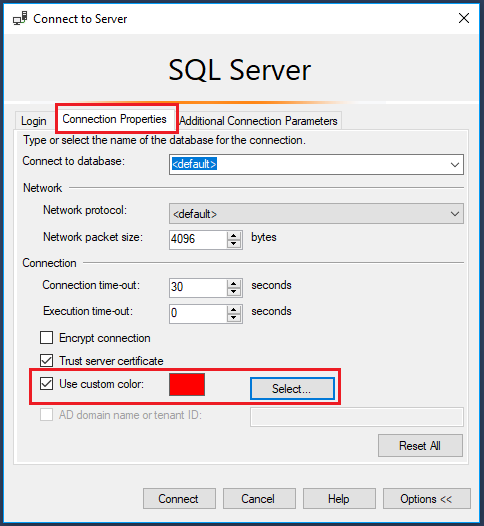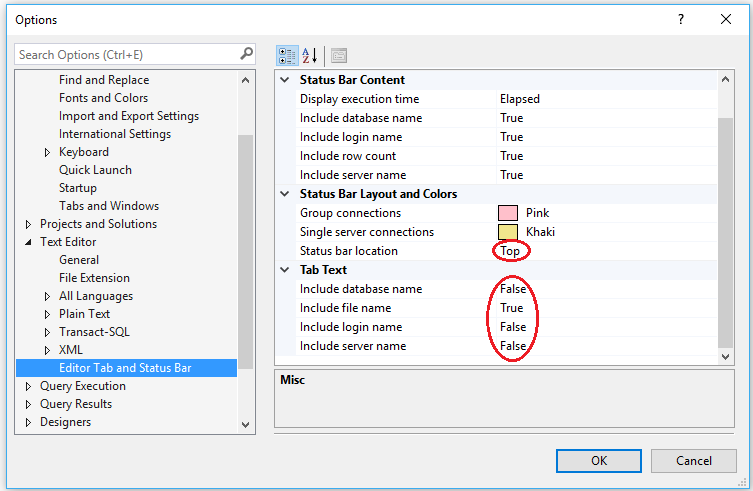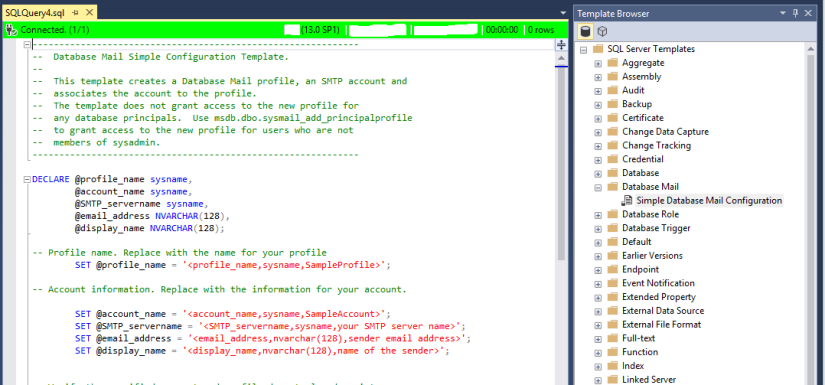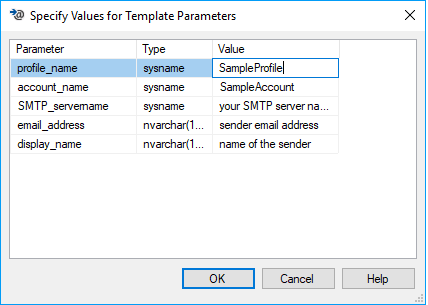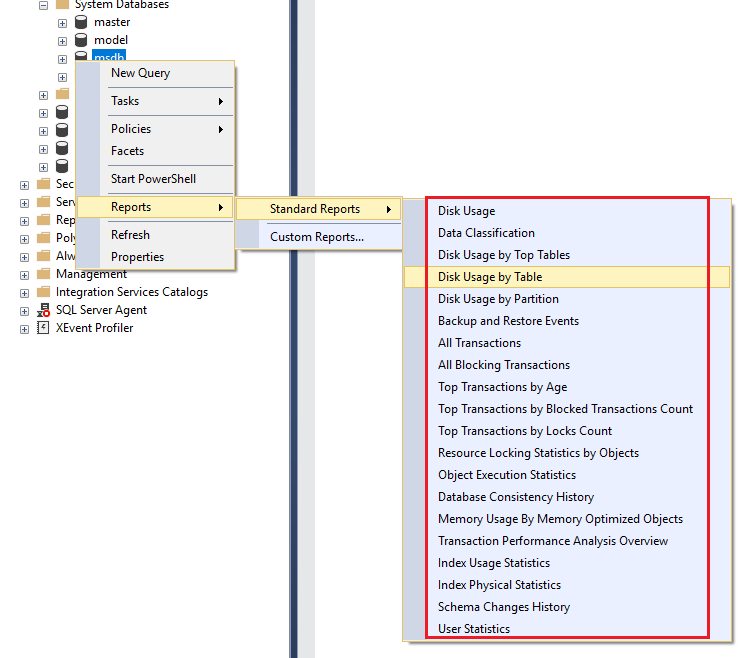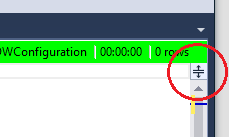SQL Server alerts are a free and easy way to get notified of corruption, agent job failures, or major failures before you get angry phone calls from users.
You should have already set up Database Mail and an alert operator to receive notifications. TIP: Always use an email distribution list for your operator notification email. If you use a person’s email, they might change jobs, or be on holiday…
The script below sets up the standard SQL Server Agent alerts for severity 17 through 25 as well as specific alerts for 823, 824 and 825 errors, and a bunch of others:
USE [msdb];
GO
SET NOCOUNT ON;
BEGIN TRANSACTION
-- Change these as required...
DECLARE @Normal_Delay_Between_Responses int = 900 -- in seconds
DECLARE @Medium_Delay_Between_Responses int = 3600
DECLARE @Long_Delay_Between_Responses int = 14400
DECLARE @OperatorName sysname = N'SQLDBAGroup'
DECLARE @CategoryName sysname = N'SQL Server Agent Alerts';
DECLARE @DelayBetweenResponses int
DECLARE @TotalAlerts int
DECLARE @Row int = 1
DECLARE @AlertName sysname
DECLARE @SeverityNo int
DECLARE @ErrorNo int
DECLARE @Alerts TABLE
(
Id int IDENTITY(1,1) NOT NULL
,SeverityNo int NULL
,ErrorNo int NULL
,AlertName sysname NOT NULL
,DelayBetweenResponses int NOT NULL
);
INSERT @Alerts (SeverityNo, AlertName, DelayBetweenResponses)
VALUES
(17, 'Alert - Sev 17 - Insufficient Resources', @Normal_DELAY_BETWEEN_RESPONSES)
,(18, 'Alert - Sev 18 - Nonfatal Internal Error', @Normal_DELAY_BETWEEN_RESPONSES)
,(19, 'Alert - Sev 19 - Fatal Error in Resource', @Normal_Delay_Between_Responses)
,(20, 'Alert - Sev 20 - Fatal Error in Current Process', @Normal_Delay_Between_Responses)
,(21, 'Alert - Sev 21 - Fatal Error in Database Process', @Normal_Delay_Between_Responses)
,(22, 'Alert - Sev 22 - Fatal Error: Table Integrity Suspect', @Normal_Delay_Between_Responses)
,(23, 'Alert - Sev 23 - Fatal Error: Database Integrity Suspect', @Normal_Delay_Between_Responses)
,(24, 'Alert - Sev 24 - Fatal Error: Hardware Error', @Normal_Delay_Between_Responses)
,(25, 'Alert - Sev 25 - Fatal Error', @Normal_Delay_Between_Responses);
INSERT @Alerts (ErrorNo, AlertName, DelayBetweenResponses)
VALUES
(601, 'Alert - Error 601 - NOLOCK scan aborted due to data movement', @Long_Delay_Between_Responses)
,(674, 'Alert - Error 674 - Exception occurred in destructor', @Long_Delay_Between_Responses)
,(708, 'Alert - Error 708 - Low virtual address space or low virtual memory', @Medium_Delay_Between_Responses)
,(806, 'Alert - Error 806 - Audit failure: page read from disk failed basic integrity checks', @Medium_Delay_Between_Responses)
,(823, 'Alert - Error 823 - I/O Error: http://support.microsoft.com/kb/2015755', @Normal_Delay_Between_Responses)
,(824, 'Alert - Error 824 - Consistency-based I/O error: http://support.microsoft.com/kb/2015756', @Normal_Delay_Between_Responses)
,(825, 'Alert - Error 825 - File Read Retry: http://support.microsoft.com/kb/2015757', @Normal_Delay_Between_Responses)
,(832, 'Alert - Error 832 - Constant page has changed: http://support.microsoft.com/kb/2015759', @Normal_Delay_Between_Responses)
,(833, 'Alert - Error 833 - Long I/O request', @Long_Delay_Between_Responses)
,(855, 'Alert - Error 855 - Uncorrectable hardware memory corruption detected', @Normal_Delay_Between_Responses)
,(856, 'Alert - Error 856 - SQL Server has detected hardware memory corruption, but has recovered the page', @Normal_Delay_Between_Responses)
,(1205, 'Alert - Error 1205 - Transaction Deadlock arbitrated', @Long_Delay_Between_Responses)
,(3401, 'Alert - Error 3401 - Errors occurred during recovery while rolling back a transaction', @Normal_Delay_Between_Responses)
,(3410, 'Alert - Error 3410 - Data in filegroup is offline', @Medium_Delay_Between_Responses)
,(3414, 'Alert - Error 3414 - Recovery Error', @Long_Delay_Between_Responses)
,(3422, 'Alert - Error 3422 - Database was shutdown', @Long_Delay_Between_Responses)
,(3452, 'Alert - Error 3452 - Recovery inconsistency', @Long_Delay_Between_Responses)
,(3619, 'Alert - Error 3619 - Could not write a checkpoint because the log is out of space', @Medium_Delay_Between_Responses)
,(3620, 'Alert - Error 3620 - Automatic checkpointing is disabled because the log is out of space', @Medium_Delay_Between_Responses)
,(3959, 'Alert - Error 3959 - Version store is full', @Normal_Delay_Between_Responses)
,(5029, 'Alert - Error 5029 - Warning: Log has been rebuilt', @Long_Delay_Between_Responses)
,(5144, 'Alert - Error 5144 - Autogrow of file was cancelled by user or timed out', @Long_Delay_Between_Responses)
,(5145, 'Alert - Error 5145 - Long Autogrow of file', @Medium_Delay_Between_Responses)
,(5182, 'Alert - Error 5182 - New log file created', @Long_Delay_Between_Responses)
,(9001, 'Alert - Error 9001 - Transaction log not available', @Normal_Delay_Between_Responses)
,(9002, 'Alert - Error 9002 - Transaction log full', @Normal_Delay_Between_Responses)
,(17173, 'Alert - Error 17173 - Ignored trace flag', @Long_Delay_Between_Responses)
,(17883, 'Alert - Error 17883 - Non-yielding Worker on Scheduler', @Medium_Delay_Between_Responses)
,(17884, 'Alert - Error 17884 - New queries assigned to process have not been picked up by a worker thread', @Medium_Delay_Between_Responses)
,(17887, 'Alert - Error 17887 - Worker appears to be non-yielding on Node', @Medium_Delay_Between_Responses)
,(17888, 'Alert - Error 17888 - All schedulers on Node appear deadlocked', @Medium_Delay_Between_Responses)
,(17890, 'Alert - Error 17890 - A significant part of sql server process memory has been paged out', @Long_Delay_Between_Responses)
,(17891, 'Alert - Error 17891 - Worker appears to be non-yielding on Node', @Medium_Delay_Between_Responses)
SELECT @TotalAlerts = COUNT(*) FROM @Alerts
IF NOT EXISTS(SELECT * FROM msdb.dbo.sysoperators WHERE name = @OperatorName)
BEGIN
RAISERROR ('SQL Operator %s does not exist', 18, 16, @OperatorName);
RETURN;
END
IF NOT EXISTS (SELECT * FROM msdb.dbo.syscategories
WHERE category_class = 2 -- ALERT
AND category_type = 3 AND name = @CategoryName)
BEGIN
EXEC dbo.sp_add_category @class = N'ALERT', @type = N'NONE', @name = @CategoryName;
END
BEGIN TRY
WHILE @Row <= @TotalAlerts
BEGIN
SELECT
@AlertName = @@SERVERNAME + ' - ' + AlertName
,@SeverityNo = SeverityNo
,@ErrorNo = ErrorNo
,@DelayBetweenResponses = DelayBetweenResponses
FROM
@Alerts
WHERE
Id = @Row
IF EXISTS (SELECT * FROM msdb.dbo.sysalerts WHERE [name] = @AlertName)
BEGIN
EXEC msdb.dbo.sp_delete_alert @name = @AlertName
END
IF @SeverityNo IS NOT NULL
BEGIN
EXEC msdb.dbo.sp_add_alert
@name = @AlertName,
@message_id = 0,
@severity = @SeverityNo,
@enabled = 1,
@Delay_Between_Responses = @DelayBetweenResponses,
@include_event_description_in = 1,
@category_name = @CategoryName,
@job_id = N'00000000-0000-0000-0000-000000000000'
END
IF @ErrorNo IS NOT NULL
BEGIN
-- Errors 855 and 856 require SQL Server 2012+ and Enterprise Edition
-- [Also need Windows Server 2012+, and hardware that supports memory error correction]
IF @ErrorNo NOT IN (855, 856)
OR (LEFT(CONVERT(CHAR(2),SERVERPROPERTY('ProductVersion')), 2) >= '11' AND SERVERPROPERTY('EngineEdition') = 3)
BEGIN
EXEC msdb.dbo.sp_add_alert
@name = @AlertName,
@message_id = @ErrorNo,
@severity = 0,
@enabled = 1,
@Delay_Between_Responses = @DelayBetweenResponses,
@include_event_description_in = 1,
@category_name = @CategoryName,
@job_id = N'00000000-0000-0000-0000-000000000000'
END
END
EXEC msdb.dbo.sp_add_notification @Alert_Name = @AlertName, @Operator_Name = @OperatorName, @notification_method = 1
SELECT @Row = @Row + 1
END
END TRY
BEGIN CATCH
PRINT ERROR_MESSAGE()
IF @@TRANCOUNT > 0
BEGIN
ROLLBACK
END
END CATCH
IF @@TRANCOUNT > 0
BEGIN
COMMIT
END

